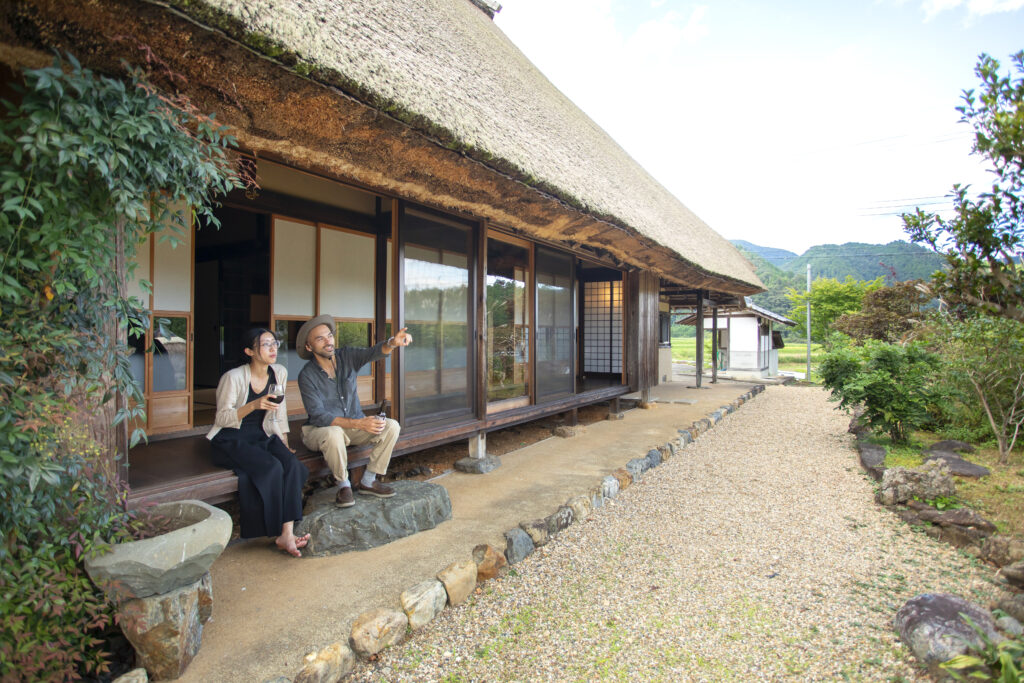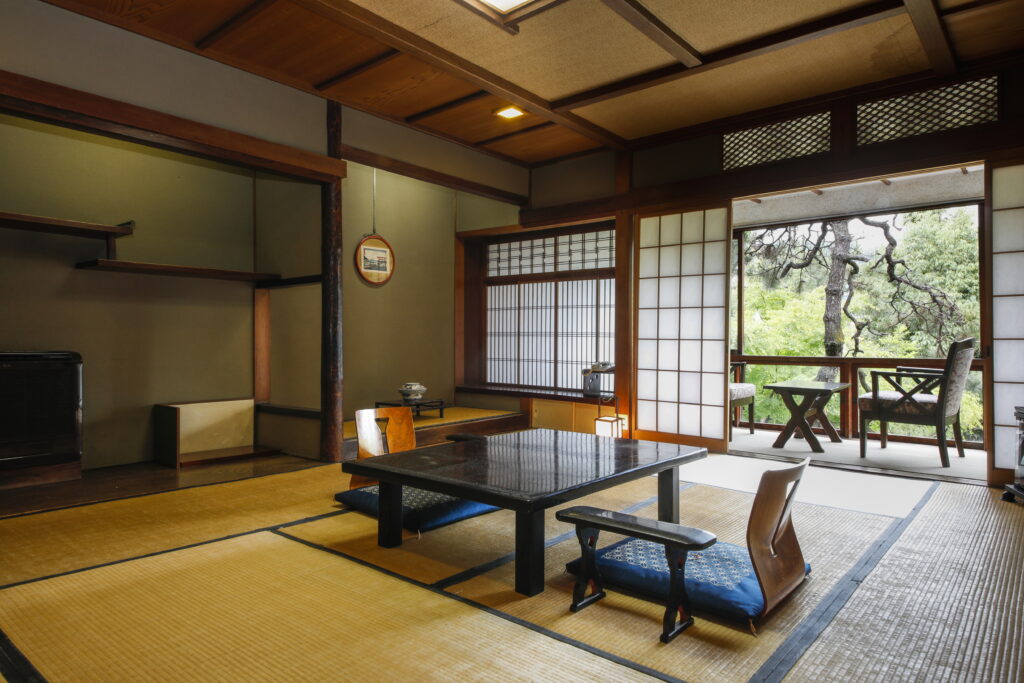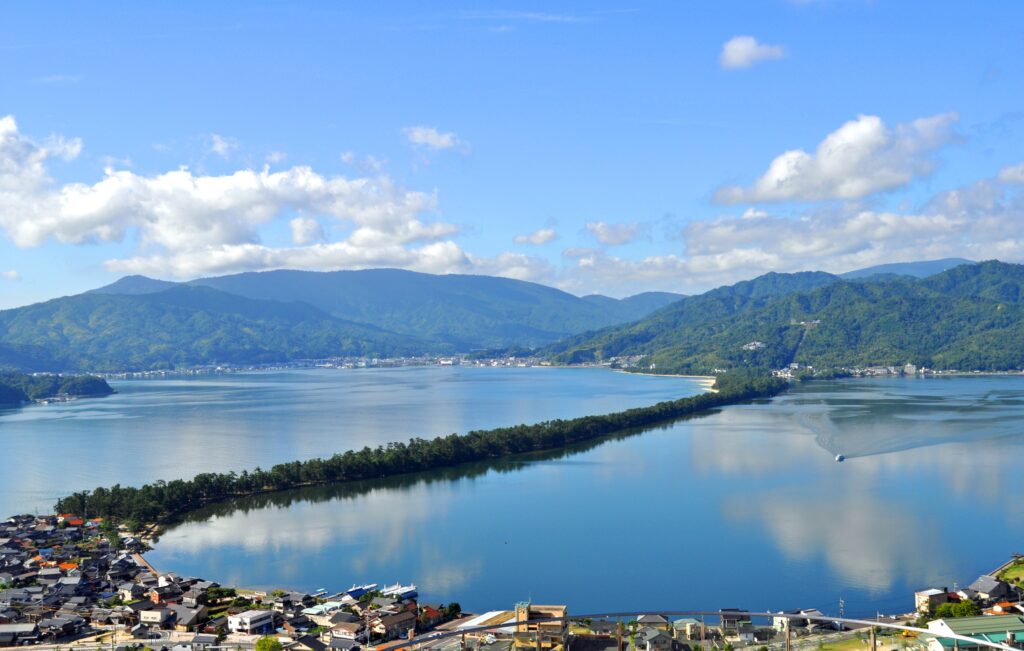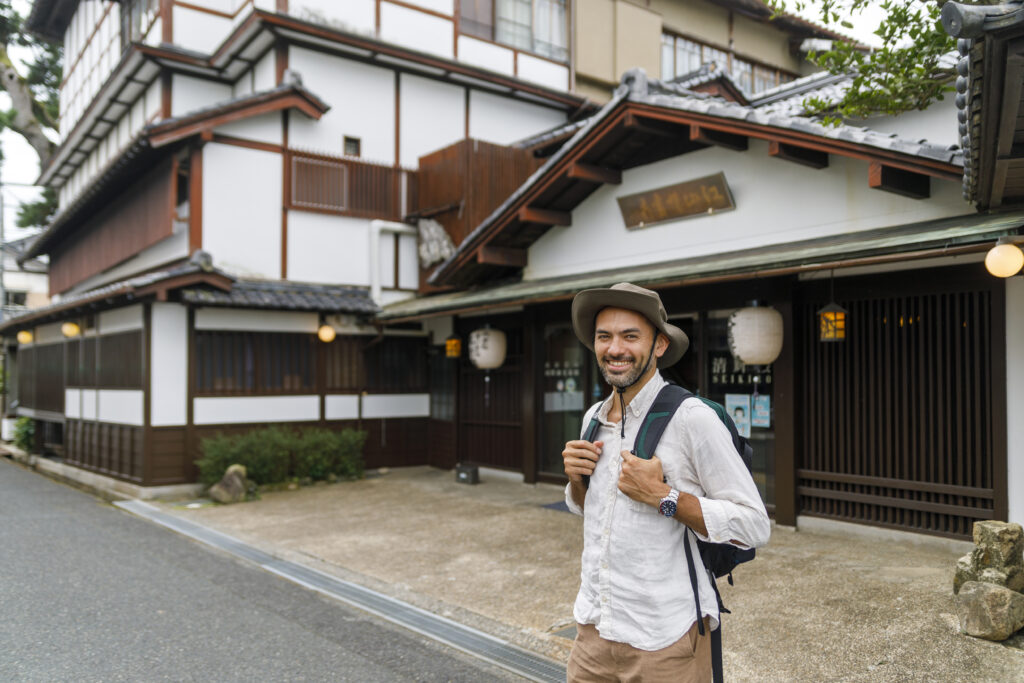◆Gather Around the Sunken Hearth
_______________
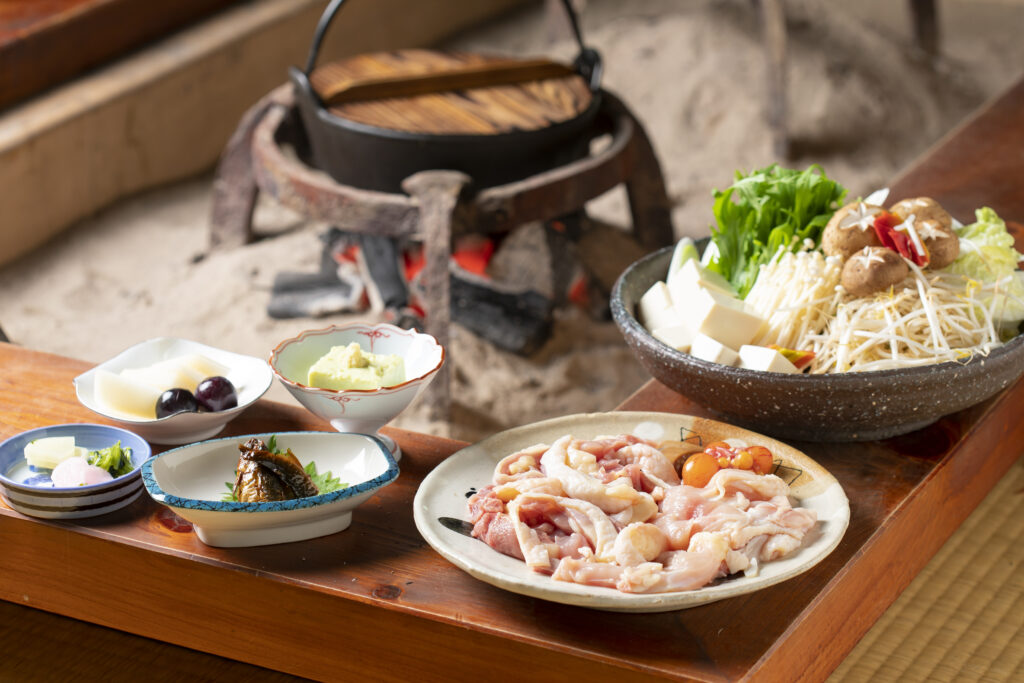
The irori sunken hearth is the symbolic heart of the rural home around which people gather to prepare tea, cook meals, celebrate and keep warm. As well as providing a light source, a low fire would be kept burning at all times as the rising smoke keeps insects out of the thatched roof and helps to preserve the wooden structure of the home.
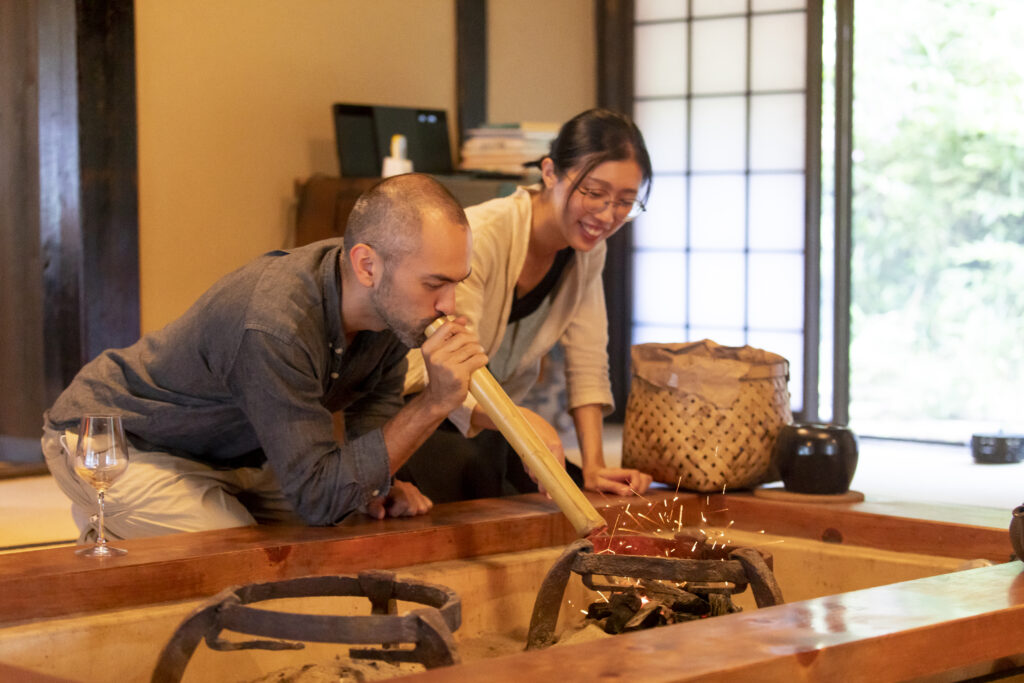
Although the kitchen is fully equipped, cooking over coals in the traditional way in the sunken hearth is the best way to fully embrace the kayabuki experience! We enjoyed a hotpot dinner of free-range chicken and fresh local vegetables along with a number of side dishes provided by the operators of Mitoya. After the delicious meal, we listened to the gentle chirping of insects from outside as the orange embers of the hearth slowly faded and the evening drew to a close.
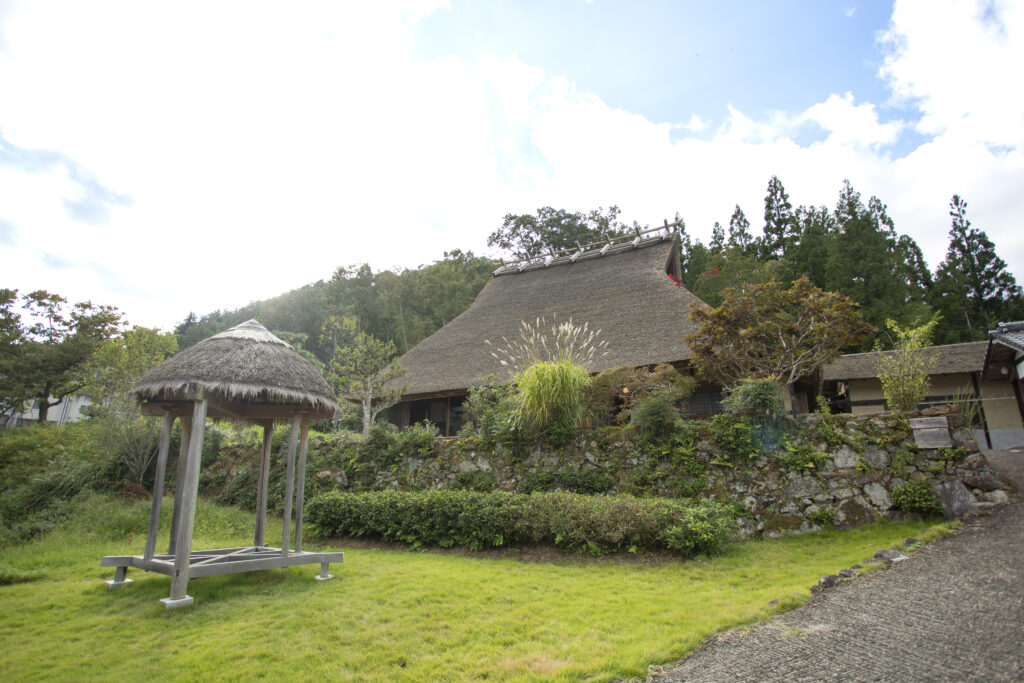
Waking early to breathe the fresh morning air from the veranda, we watched as the mountains and rice fields were bathed in the golden light of a beautiful sunrise. There are also mornings where the surroundings are blanketed in mist and the scene takes on an otherworldly feel. Breakfast was self-serve with local produce including bread and Miyama milk, as well as cereal, coffee and a selection of teas provided in the kitchen.
Staying under the roof of a kayabuki home surrounded by the beauty of Miyama’s countryside revealed a much more tranquil side to Kyoto and provided an insight into the superb architecture only found in the rural parts of the prefecture. We explored the area around Mitoya on foot but another great way to take in the natural surroundings is by renting a bicycle from the operators of the cottage.
If you’d like to further enjoy Kyoto’s countryside, the Miyama area also offers several outdoor activities such as hiking trails, river rafting and fishing.
For Mitoya, prices range from 8,200 yen to 55,900 yen depending on the season and number of guests. Hotpot dinner course is priced at 6,900 yen per person.Shuttle service to and from JR Sonobe station is available.
Address (reception center): 52 Shima-koiwa, Miyama-cho, Nantan City, Kyoto Prefecture
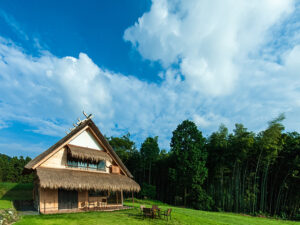
Miyama Futon & Breakfast Thatched Cottages
Miyama Futon& Breakfast is a traditional thatched cottage fully rennovated and complete with all the modern conveniences. The house is 150 years old and registered as a site of cultural heritage. It i …
